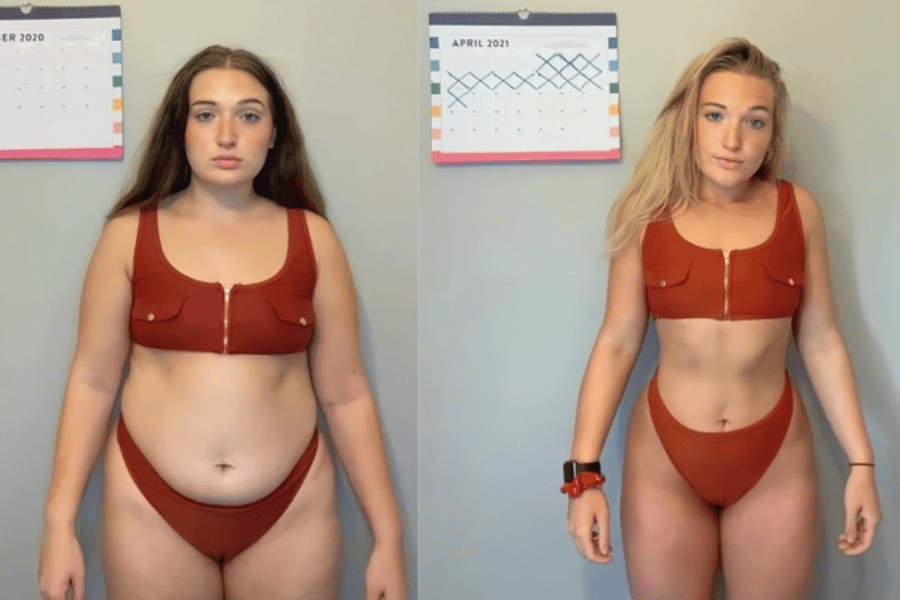Embarking on a journey to achieve fitness goals demands a personalized strategy, particularly in diet and exercise planning. Here, the concept of TDEE (Total Daily Energy Expenditure) emerges as a crucial tool. This calculator isn’t just a number; it’s a gateway to understanding how much energy your body expends in a day, thereby shaping your diet and exercise regimen effectively.
TDEE represents a dynamic blend of various factors – your resting metabolic rate, daily activities, and the energy used in digesting food. Knowing your TDEE is pivotal in customizing your fitness plan, as it guides you in determining how many calories you should consume to lose, maintain, or even gain weight, in line with your fitness goals.
Fitness expert John Doe emphasizes, “Understanding your TDEE is like having a roadmap for your fitness journey. It helps you navigate through the myriad of diet and exercise options to find what works best for you.”
In this guide, we delve into the intricacies of TDEE and how leveraging a TDEE calculator can revolutionize your approach to fitness. From calculating your TDEE to tailoring your diet and exercise plan around it, we cover everything you need to embark on a journey tailored just for you.

tdee calculator
Understanding TDEE
TDEE, or Total Daily Energy Expenditure, is a comprehensive measure that reveals the total amount of energy you expend in a day. It’s an aggregation of various factors, notably your Basal Metabolic Rate (BMR), the energy expended in physical activity, and the Thermic Effect of Food (TEF).
- Basal Metabolic Rate (BMR): This is the energy used by your body at rest, accounting for the majority of your daily energy expenditure. It supports fundamental physiological functions like breathing, circulation, and cell production.
- Physical Activity: This includes all forms of exercise and daily movements, from structured workouts to casual walking. The more active you are, the higher your TDEE.
- Thermic Effect of Food (TEF): This refers to the energy required to digest, absorb, and metabolize the nutrients in your food.
Knowing your TDEE is crucial as it serves as a foundation for any fitness plan. Fitness coach Jane Smith explains, “Your TDEE is the cornerstone of your fitness strategy. It determines how many calories you need to maintain your current weight, making it an essential starting point for any weight loss or gain journey.”
By understanding and applying the principles of TDEE, you can create a more effective and personalized fitness plan, ensuring that your diet and exercise routines align perfectly with your body’s unique energy requirements.

tdee calculator
Benefits of Using a TDEE Calculator
Utilizing a TDEE calculator offers numerous advantages, particularly for those seeking a more tailored approach to achieving their fitness goals.
- Precision in Calorie Management: A TDEE calculator provides an accurate estimate of your daily caloric needs. This precision is crucial for effective weight management. Whether your goal is weight loss, maintenance, or gain, understanding your daily calorie requirement is the key to success.
- Personalized Diet and Exercise Plans: With your TDEE in hand, you can create a diet and exercise regimen that’s uniquely suited to your body’s needs. As fitness expert Alex Johnson notes, “A TDEE calculator personalizes your fitness journey. It takes the guesswork out of the equation, allowing you to focus on what works specifically for you.”
- Goal Alignment: By knowing your TDEE, you can align your fitness goals more realistically. It helps in setting achievable targets for calorie intake and expenditure, paving the way for sustained progress.
- Adaptability and Flexibility: As your body changes, so does your TDEE. Regularly using a TDEE calculator allows for adjustments in your fitness plan, ensuring it always matches your current needs.
- Educational Insight: Understanding the factors that influence your TDEE – like age, gender, weight, height, and activity level – educates you about your body’s energy requirements. This knowledge is empowering, helping you make informed decisions about your health and fitness.
In essence, a TDEE calculator is not just a tool for calculating calories; it’s a gateway to a more informed, efficient, and personalized approach to fitness. By incorporating it into your fitness regimen, you’re taking a significant step towards achieving your health and wellness goals in a way that’s tailored just for you.
Steps to Calculate Your TDEE
Calculating your TDEE (Total Daily Energy Expenditure) is a straightforward process, but it requires accuracy and attention to detail. Here’s a step-by-step guide to help you determine your daily caloric needs:
- Gather Your Data: You’ll need your current weight, height, age, and gender. These factors are essential as they significantly influence your basal metabolic rate (BMR).
- Assess Your Activity Level: Your activity level ranges from sedentary (little or no exercise) to very active (hard exercise/sports 6-7 days a week). Be honest in your assessment to ensure accurate results.
- Input Data into a TDEE Calculator: There are many online TDEE calculators available. Choose one that is reputable and enter your details. The calculator uses standardized formulas to estimate your BMR and then adjusts it based on your activity level to find your TDEE.
- Understanding the Results: The calculator will provide you with the number of calories you need to maintain your current weight. This is your TDEE. If your goal is weight loss, you’ll need to consume fewer calories than this number. For weight gain, you’ll need more.
- Adjustments for Precision: Remember that online calculators provide estimates. Monitor your body’s response and adjust your calorie intake if necessary. Fitness expert Emily Davis advises, “Use your TDEE as a starting point and adjust based on your progress and how your body feels.”
Understanding your TDEE is crucial in tailoring your diet and exercise plan. It gives you a benchmark for how many calories you should consume each day, depending on your specific goals. By following these steps, you can gain a clearer insight into your body’s needs, helping you to create a more effective and personalized fitness plan.
Tailoring Your Diet with TDEE
Once you’ve calculated your TDEE (Total Daily Energy Expenditure), you can tailor your diet to fit your specific fitness goals, whether that’s maintaining, losing, or gaining weight. Here’s how to use your TDEE effectively for dietary planning:
- Setting Calorie Goals: If your goal is weight maintenance, aim to consume calories close to your TDEE. For weight loss, create a calorie deficit by eating fewer calories than your TDEE. Conversely, for weight gain, you’ll need a calorie surplus.
- Importance of Macronutrient Distribution: Your TDEE can guide you in determining the right balance of proteins, fats, and carbohydrates. Renowned nutritionist Sarah Lee states, “Your macronutrient needs should align with your fitness goals, and understanding your TDEE is crucial in this process.”
- Meal Planning Strategies:
- For Weight Maintenance: Focus on a balanced diet that closely matches your TDEE. Include a variety of foods to ensure you get all the necessary nutrients.
- For Weight Loss: Prioritize lean proteins, fiber-rich vegetables, and whole grains. These foods are more filling and generally lower in calories, helping you stay within a calorie-deficit diet.
- For Weight Gain: Incorporate nutrient-dense foods that are higher in calories. Healthy fats like avocados, nuts, and olive oil are excellent choices.
- Monitoring and Adjusting: Keep track of your food intake and adjust as needed. Apps and food diaries can be helpful tools. Remember, your TDEE can change over time, especially with significant changes in weight or activity levels.
- Avoiding Common Dietary Misconceptions: It’s important to remember that not all calories are created equal. The quality of the food you consume is just as important as the quantity.
Using your TDEE to tailor your diet ensures that you’re consuming the right amount of calories for your specific needs. It allows for a more nuanced approach than simply counting calories, taking into account the quality and type of food you eat in addition to the quantity. This method ensures a balanced diet that supports your overall health and fitness goals.

tdee calculator
Customizing Your Exercise Plan with TDEE
After establishing your TDEE (Total Daily Energy Expenditure), it’s essential to customize your exercise plan to complement your dietary approach. Here’s how you can align your physical activity with your TDEE and calorie requirements:
- Incorporating Exercise into TDEE Calculations: Your TDEE already factors in your general activity level. To fine-tune your fitness routine, consider the intensity and frequency of your workouts. Adjust your calorie intake if your activity level changes significantly.
- Setting Fitness Goals Aligned with TDEE:
- For Weight Maintenance: Aim for a balance between calorie intake and expenditure. Your exercise routine should maintain your current fitness level without causing significant weight fluctuations.
- For Weight Loss: Focus on activities that increase calorie burn, such as cardio and high-intensity interval training (HIIT). These exercises, combined with a calorie deficit diet, can enhance weight loss.
- For Weight Gain: Incorporate strength training to build muscle mass. Muscle tissue burns more calories at rest, potentially increasing your TDEE over time.
- Exercise Recommendations for Various TDEE Scenarios:
- Low TDEE: If your TDEE is on the lower side, consider exercises that boost metabolism, like strength training, alongside moderate cardio.
- High TDEE: For those with a high TDEE, a mix of cardio, strength training, and flexibility exercises can help maintain a balanced physique.
- Consistency and Adaptability: Regularly assess how your body responds to your exercise regime. Be ready to adapt your workout plan as your fitness level improves or as your goals change.
- Listening to Your Body: Recognize the signs of overtraining or undertraining. Fitness expert Mark Thompson advises, “Your exercise plan should challenge you, but it shouldn’t lead to burnout. Listen to your body and adjust accordingly.”
By customizing your exercise plan based on your TDEE, you can create a more effective and sustainable fitness routine. This approach ensures that your physical activity is in harmony with your dietary goals, leading to better overall health and fitness outcomes.
Monitoring Progress and Adjusting
Once you’ve tailored your diet and exercise plan around your TDEE (Total Daily Energy Expenditure), it’s crucial to monitor your progress and make adjustments as needed. Here are key strategies to ensure you stay on track and adapt your plan for optimal results:
- Tracking Your Diet and Exercise: Regularly log your food intake and physical activity. This helps in identifying patterns and areas that might need adjustment. Use apps or a journal for accurate tracking.
- Adjusting to Changes in TDEE: Your TDEE can change due to factors like weight loss, age, or a change in activity levels. Periodically re-evaluate your TDEE and adjust your calorie intake and exercise regimen accordingly.
- Avoiding Common Pitfalls: One common mistake is becoming too rigid with calorie counts or exercise routines. Flexibility is key. Nutritionist Laura Brown says, “Being too strict can lead to burnout. It’s important to find a balance that’s sustainable in the long term.”
- Dealing with Plateaus: If you hit a plateau in weight loss or fitness gains, reassess your plan. Sometimes, minor tweaks in diet or exercise intensity can reignite progress.
- Using Feedback Effectively: Pay attention to how your body feels. Increased fatigue, persistent hunger, or lack of progress can be signs that your plan needs adjustment.
- Seeking Professional Advice: If you’re unsure about adjustments, consult a nutritionist or fitness coach. They can provide tailored advice based on your specific needs and progress.
Regular monitoring and willingness to adjust your plan are essential for achieving and maintaining your fitness goals. By staying attuned to your body’s needs and adapting your diet and exercise plan as your TDEE changes, you can ensure continued progress and avoid common setbacks.
Frequently Asked Questions (FAQ)
In this section, we address some common questions regarding TDEE (Total Daily Energy Expenditure) and its role in fitness planning:
- What is the significance of TDEE in fitness planning?
- TDEE is crucial because it gives you an estimate of how many calories your body needs to maintain its current weight. This information is foundational for creating a diet and exercise plan that aligns with your fitness goals, whether that’s losing weight, gaining muscle, or maintaining your current state.
- How often should I recalculate my TDEE?
- It’s advisable to recalculate your TDEE whenever you experience a significant change in weight, activity level, or lifestyle. Generally, recalculating every few months or after achieving a significant fitness milestone is a good practice.
- Can TDEE calculators be used for weight loss and muscle gain?
- Absolutely. For weight loss, you would aim to consume fewer calories than your TDEE. For muscle gain, particularly if you’re engaging in strength training, you might need to consume more than your TDEE to provide your body with enough energy and nutrients to build muscle.
- What are the limitations of TDEE calculators?
- TDEE calculators provide estimates based on general formulas and averages. They might not account for individual differences in metabolism, medical conditions, or specific body compositions. Therefore, they should be used as a guide rather than an absolute measure.
- Are there any recommended TDEE calculator apps or tools?
- There are many reputable TDEE calculators available online. Look for those that ask for detailed information about your age, gender, weight, height, and activity level for more accurate results. Some popular fitness apps also include TDEE calculator features, along with additional tools for tracking your diet and exercise.